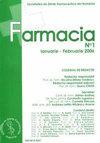QUANTITATIVE ANALYSIS OF SORAFENIB AND NILOTINIB IN HUMAN PLASMA BY SPE-LC-MS
IF 1.4
4区 医学
Q4 PHARMACOLOGY & PHARMACY
引用次数: 0
Abstract
Sorafenib and nilotinib are two tyrosine kinase inhibitors (TKIs) used in the treatment of cancer. Plasmatic levels of the drugs show an important variability, so determining plasma concentration of the drugs, benefits in cancer treatment can be improved. Most papers published so far in the literature use protein precipitation followed by liquid chromatography - tandem mass-spectrometry (LC-MS/MS) as separation and detection method. With this work, we propose an alternative method for the analysis of both TKIs in human plasma. Solid phase extraction (SPE) involving Oasis PRiME HLB ® cartridges was our choice for plasma “clean-up” procedure. Extraction recoveries were at least 85%. Chromatography was performed by an ultra-high-performance liquid chromatographic system (UHPLC), using a C18 (4.6 x 50 mm) column and a mobile phase consisting of ammonium acetate/acetic acid-acetonitrile gradient elution. Detector was a simple mass spectrometer (MS) in Single Ion Recording (SIR) mode. Intra-and inter-day precision data for both TKIs were 3.8 - 7.6% and 4.5 - 8.8% for sorafenib and nilotinib, respectively. Sorafenib and nilotinib calibration curves were linear between 500 and 20000 ng/mL and 5 and 5000 ng/mL respectively, with correlation coefficients higher than 0.998. Analytes were determined in a 15 min run-time. The validated LC-MS method was applied in real human plasma routine analysis. This method may improve dose adjustment of the drugs in patients involved in cancer therapy利用SPE-LC-MS对人体血浆中的索拉非尼和尼洛替尼进行定量分析
索拉非尼和尼洛替尼是两种用于治疗癌症的酪氨酸激酶抑制剂(TKIs)。这两种药物的血浆浓度存在很大差异,因此确定药物的血浆浓度可以提高癌症治疗的效益。迄今为止,发表在文献中的大多数论文都使用蛋白质沉淀后的液相色谱-串联质谱(LC-MS/MS)作为分离和检测方法。通过这项工作,我们提出了分析人体血浆中这两种 TKIs 的替代方法。在血浆 "净化 "过程中,我们选择了使用 Oasis PRiME HLB ® 滤芯的固相萃取 (SPE)。萃取回收率至少为 85%。色谱采用超高效液相色谱系统(UHPLC),使用 C18(4.6 x 50 毫米)色谱柱和乙酸铵/乙酸-乙腈梯度洗脱流动相。检测器为简单质谱仪(MS),采用单离子记录(SIR)模式。索拉非尼和尼洛替尼两种 TKIs 的日内和日间精密度数据分别为 3.8 - 7.6% 和 4.5 - 8.8%。索拉非尼和尼洛替尼的校准曲线分别在500-20000纳克/毫升和5-5000纳克/毫升之间呈线性关系,相关系数高于0.998。分析物的测定只需 15 分钟的运行时间。经过验证的液相色谱-质谱方法被应用于实际人体血浆的常规分析。该方法可改善癌症治疗患者的药物剂量调整
本文章由计算机程序翻译,如有差异,请以英文原文为准。
求助全文
约1分钟内获得全文
求助全文
来源期刊

FARMACIA
医学-药学
CiteScore
2.40
自引率
50.00%
发文量
59
审稿时长
6-12 weeks
期刊介绍:
FARMACIA publishes original research papers, invited topical reviews and editorial commentaries and news, with emphasis on conceptual novelty and scientific quality. Main research areas are focused on: pharmacology, toxicology, medicinal chemistry, biopharmacy, drug design, drug delivery, personalized medicine, nanostructures, nutraceuticals, biochemistry and biotechnology. Manuscripts submitted to the Journal are only accepted after the peer review precess. The papers should have not been published in any other journal. The recommendations of the Declaration of Helsinki, for humans, and the International guidelines as accepted principles for the use of experimental animals should be followed.
 求助内容:
求助内容: 应助结果提醒方式:
应助结果提醒方式:


